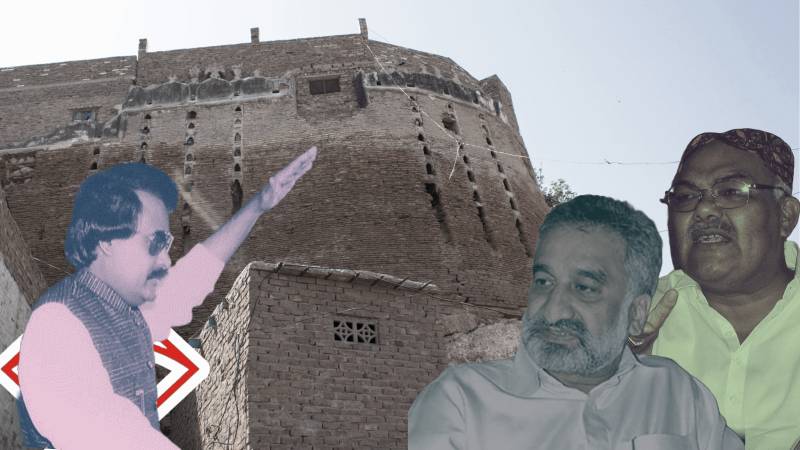
Each year, when September approaches, the horrifying memories of the massacre in Hyderabad, Sindh, on September 30, 1988, come flooding back. That day, the city was soaked in blood—a day when hatred and xenophobia overwhelmed humanity. This massacre remains one of the darkest chapters in Sindh's troubled history, a stark reminder of the perilous effects of ethnic division, political manipulation, and unchecked violence.
I was an eyewitness to this terrifying event. Armed extremists from Jaye Sindh patrolled the streets of Hyderabad in open jeeps, brazenly firing on innocent citizens. The once-bustling roads were transformed into battlegrounds, where no one—neither children, women, nor shopkeepers—was spared. By the day's end, hundreds were injured, and over 300 lives were senselessly lost.
Living only minutes away from Hyderabad's Civil Hospital, I had rushed to the scene. What faced me was a vision of despair: families desperately dragging the bodies of their loved ones into the emergency ward, the hospital overwhelmed by the sheer number of victims. Shockwaves of fear and anger pulsed through the city, sparking bloody riots between Muhajirs and Sindhis. This chaos was fuelled by some extremist politicians who saw the tragedy as an opportunity to deepen the rift between the two communities.
Two of the few perpetrators of this massacre were not faceless. Leaders like Qadir Magsi and Zulfikar Mirza led the charge, orchestrating the violence under the guise of ethnic pride. Magsi, who would later rise to prominence as the leader of the Sindh Taraqi Pasand Party, enjoyed widespread political acceptance despite his role in the massacre. Mirza, once Sindh's interior minister, openly threatened the Muhajir community during his tenure, allegedly distributing over 250,000 weapon licences to militants. These figures, once hailed as protectors of Sindh rights, were, in reality, sowers of division, using the politics of bloodshed for personal gain.
At the time, the Muhajir community, especially in Karachi and Hyderabad, was rallying behind Altaf Hussain and his Muhajir Qaumi Movement (MQM) party. The events of September 30 only galvanised their support for Altaf Hussain, who convened a meeting of MQM leaders in Hyderabad, urging them not to retaliate against the violent provocations. Many within the party, enraged by the senseless killing of their people, demanded immediate revenge. But Altaf's orders were clear—no retaliation. This restraint, however, caused deep fractures within the MQM (of Karachi and Hyderabad), and some factions broke away, seeking retribution on their own terms.
The period following the massacre marked the beginning of an era of suspicion and fear. Factionalism grew within the MQM, with many competing for control through violence and intimidation. It became increasingly clear to me that there was more at play than mere ethnic rivalry. Altaf Hussain's inner circle seemed less concerned with addressing the legitimate grievances of Muhajirs—such as discrimination in education and employment—and more focused on using these issues as leverage for political power.
The solution to Sindh's crisis is not to deepen the ethnic divide but to recognise that both communities share the same challenges. Only by working together can they hope to overcome these obstacles
A major source of this discontent was the quota system introduced after the Fall of Dhaka. Under Zulfikar Ali Bhutto's leadership, Sindh was divided into urban and rural zones, with quotas in education and employment that favoured rural Sindhis over urban-centric Muhajirs. Though intended to uplift rural Sindhis, the system failed. Today, rural Sindh remains impoverished, while Muhajirs are systematically excluded from opportunities in education, employment and Sindh's bureaucracy.
Altaf Hussain capitalised on these frustrations but did little to dismantle the discriminatory quota system. Instead, he turned Muhajir's grievances into a political tool, selling their votes to the highest bidder, including the Pakistan Peoples Party (PPP) under Asif Ali Zardari. Rather than fighting for equal rights and merit-based governance, Altaf pursued power for himself, leaving the Muhajir community fragmented and powerless.
These divisions still scar Sindh's political landscape today. Though Muhajirs and Sindhis live side by side, the wounds of past violence have yet to heal. In my family, there are many Sindhi relatives, and I have seen firsthand the potential for peaceful coexistence. However, true unity will remain elusive without addressing the structural injustices—like the quota system and equal opportunities in jobs—and moving towards a governance model based on merit rather than ethnicity.
The political elite in Sindh have failed not just Muhajirs but Sindhis as well. The province's infrastructure is crumbling, its institutions are in disrepair, and its people suffer from poverty, unemployment, and rampant lawlessness. Karachi, once Pakistan's economic heart, is now plagued by mismanagement and neglect. Roads are broken, schools and hospitals are in shambles, and millions of Afghan refugees, many involved in criminal activities, live on the outskirts of the city, exacerbating the chaos.
In this climate of lawlessness, both Muhajirs and Sindhis are victimised. Ethnic divisions have only served to distract from the real problems facing Sindh—corruption, incompetence, and failed governance. The solution to Sindh's crisis is not to deepen the ethnic divide but to recognise that both communities share the same challenges. Only by working together can they hope to overcome these obstacles.
It is time to rethink Sindh's political structure. Karachi, a cosmopolitan city with a population larger than some countries, should be granted independent governance, away from Sindh's provincial administration. A comprehensive master plan for the city's development is long overdue. Additionally, Hyderabad, Sindh's second-largest city, should become the provincial capital, with a government that genuinely represents the people of Sindh.
The events of September 30, 1988, were a tragic reminder of the dangers of ethnic division and political manipulation. But they also offer a lesson in the importance of unity, meritocracy, and governance that serves all citizens, regardless of ethnicity. Only by learning from the past can Sindh hope to forge a future where Muhajirs and Sindhis work together to create a prosperous, peaceful, and united province.

